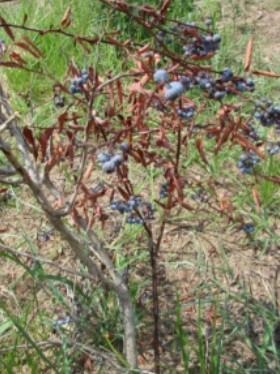
Figure 1. Botryosphaeria stem blight disease affected blueberry stems do not drop their leaves, resulting in a brown-leafed ‘flag’ symptom.
Disease Management
Management of this disease depends on cultural methods since no chemical sprays can effectively control the disease.
Pruning to remove infected stems is the best method of reducing the disease pressure. Pruning removes infected stems from bushes, preventing eventual death of the plant, and reduces the number of spores released in the field. Pruning can be done anytime infected stems are observed, but care should be taken to cut well below the infected area. After a stem is cut off, examine the cut end of the remaining stem. If any brown areas are visible in this cross-section, the cut must be made again further down the stem until all infected tissue is removed. Otherwise, the disease will remain in the stem and continue on down to the crown, possibly killing the plant. Infected prunings should be removed well away from the field and burned or shredded.
Fertilizer management is critical to prevent formation of succulent shoots late in the growing season. Infection of cold-injured shoots around the base of the bush is a primary means by which this fungus enters blueberry plants. Fertilizer should not be used after mid-summer, especially on young bushes.
Cultivar Susceptibility
Rabbiteye blueberry cultivars ‘Powderblue’ and ‘Premier,’ and southern highbush cultivars ‘Croatan,’ ‘Reveille,’ ‘Harrison,’ and ‘Bladen,’ are susceptible to stem blight, but have been grown with losses averaging less than 10 to 20 percent. Southern highbush blueberry cultivars ‘Bluechip’ and ‘Bounty’ are the most susceptible and should be avoided in areas prone to disease infection.
Source : aces.edu